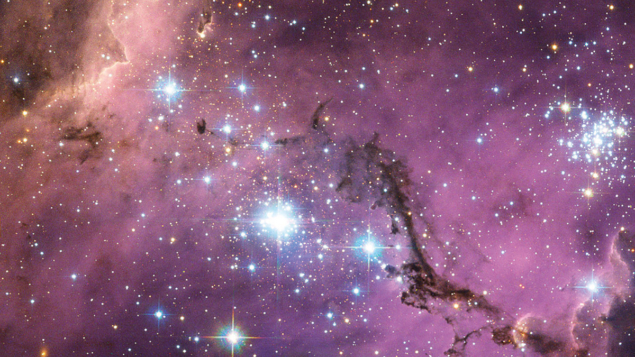
Type1A supernovae play an important role in the universe, both as the main source of iron and as one of the principal tools for astronomers to measure cosmic-distance scales. They are also important for astroparticle physics, for example allowing the properties of the neutrino to be probed in an extreme environment.
Type1A supernovae make ideal cosmic rulers because they all look very similar, with roughly equal luminosity and emission characteristics. Therefore, when a cosmic explosion that matches the properties of a type1A supernova is detected, its luminosity can be directly used to measure the distance to its host galaxy. Despite this importance, the details surrounding the progenitors of these events are still not fully understood. Furthermore, a group of outliers, now known as type1ax events, has recently been identified that indicate there might be more than one path towards a type1A explosion.
The reason that typical type1A events all have a roughly equal luminosity is because of their progenitors. The general explanation for these events includes a binary system with at least one white dwarf: a very dense old star consisting mostly of oxygen and carbon that is not undergoing fusion. The system is only prevented from collapsing into a neutron star or black hole due to electron-degeneracy pressure. As the white dwarf accumulates matter from a nearby companion, its mass increases to a precise critical limit at which an uncontrolled thermonuclear explosion starts, resulting in the star being unbounded and seen as the supernova.
This peculiar binary system provides strong hints of a new type of progenitor that can explain up to 30% of all supernovae 1a events
As several X-ray sources were identified in the 1990s by the ROSAT mission as being white dwarfs with hydrogen burning on their surface, the source of matter that is accumulated by the white dwarf was long thought to be hydrogen from a companion star. The flaw with this model, however, is that type1A supernovae show no signs of any hydrogen. On the other hand, helium has been seen, particularly in the outlier type1ax supernovae events. These 1ax events, which are predicted to make up 30% of all type1A events, can be explained by a white dwarf accumulating helium from a companion star that has already shed all of its hydrogen. If the helium was able to accumulate on the surface in a stable way, without intermediate explosions due to violent ignition of the helium, it reaches a mass where it violently ignites on the surface. This in turn triggers the ignition of the core and could explain the type1ax events. Evidence of helium accumulating white dwarfs has, however, not been found.
Now, a group led by researchers from the Max Planck Institute for Extraterrestrial Physics (MPE) has used both optical data and X-ray data from the eROSITA and XMM Newton missions to find the first clear evidence of such a progenitor system. The group found an object, known as [HP99] 159, located in the Large Magellanic Cloud, which shows all the characteristics of a white dwarf surrounded by an accretion disk of helium. Using historical X-ray data from as far back as 50 years, the team also showed that the brightness of the source is relatively stable, thereby indicating that it is accumulating the helium at a stable rate, despite the accumulation rate being lower than theoretically predicted for stable burning. This indicates that the system is working its way towards ignition in the future.
The discovery of this new X-ray source therefore proves the existence of white dwarfs that accumulate helium from a companion star at a steady rate, thereby allowing them to reach the conditions to produce a supernova. This peculiar binary system already provides strong hints of a new type of progenitor that can explain up to 30% of all supernovae 1a events. Follow-up measurements will provide further insight into the complex physics at play in the thermonuclear explosions that produce these events, while [HP99] 159’s characteristics can be used to find similar sources.
Further reading
J Greiner et al. 2023 Nature 615 605.





